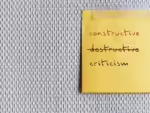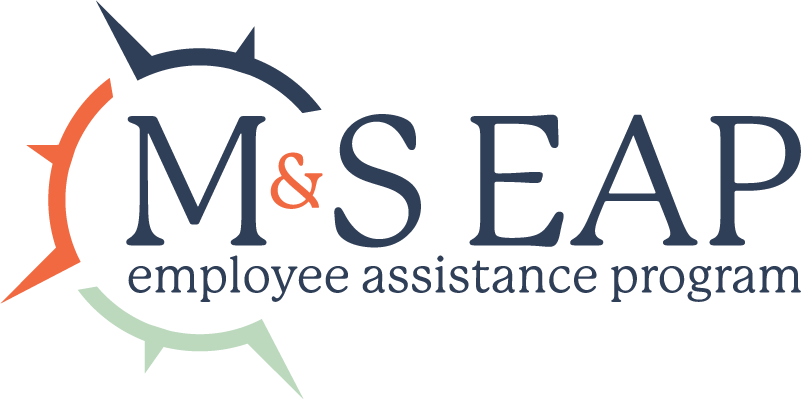Why Delivery and Timeliness is Key With Constructive Criticism

No one likes to hear that they are not performing well, nor do they appreciate being told that someone is disappointed in them – and this is often the sense people get when they hear the term “constructive criticism.”
For this reason, managers and employees tend to avoid potential confrontation situations.
But constructive criticism, at its core, is anything but negative. It should stimulate a better work environment, employee loyalty, and retention when done appropriately. It should empower you to be a better manager and empower your employees to increase their work output.
What is constructive criticism?
Constructive criticism is a type of feedback that gives the employee areas to work on while praising the work they have already done. It is a way of pointing out employee weaknesses that do not tear the employee down but rather guide them into improving their quality of work.
“Constructive criticism is actionable, clear, and beneficial to the recipient….It contrasts with destructive criticism, which may be either positive in its intent but unhelpful, negative and deliberately hurtful, or both.”
While it might be hard to give feedback because you do not like pointing out the shortcomings of your staff, it is infinitely better for your employees to do so regularly. One survey resulted in 96 percent of employees saying they valued regular feedback:
“Feedback is all about changing behavior, and the closer you give feedback on the behavior you want to be changed, the more likely it is to change. If you wait until an annual performance review to give feedback, that’s too late, it’s already forgotten about.”
This should encourage the idea that even though offering that feedback may be challenging in the moment, it ultimately improves company culture and work output in the long run.
How to give constructive criticism feedback to your employees
So the time has come to sit down with a member of your staff and talk with them about ways they can improve – how exactly should you do it? How does one constructively offer criticism?
Try the “Positive-Improvement-Positive” technique
This technique, also known as a “feedback sandwich,” pairs the critique with two positive praises to help soften the blow while still addressing the issues.
For example, in a meeting, you may say, “I noticed how you handled that challenging customer interaction on the sales floor yesterday. Next time, would you also call a supervisor down to help until you’re more comfortable with how we assuage customer complaints? But overall, you did an excellent job considering you’re still learning the ins and outs of our company.”
This highlights where improvement was needed while praising the employee for their well-done job.
Use “I” statements
These statements, like “I feel” or “I noticed,” help deliver information about the situation instead of coming across as a direct hit against the employee. These statements also help the employee understand better where you are coming from, allowing them to see your point of view. Additionally, they help minimize the chances of miscommunication.
Offer positive praise
By offering a bit of praise with each critique, you allow the employee to hone in less on how they have failed to meet expectations and more on how they have excelled.
“[Specific praise] allows your employees to focus on the tasks and responsibilities they perform satisfactorily or above standards. Then, they can apply those strengths to plans of improvement you may implement for weaker skills or performance.”
Be aware of the timing
There are times when an employee is in a place to receive criticism and times when they are not. While some things need to be addressed sooner rather than later, it is important to be as aware and conscious of the timing as possible to ensure that the criticism is well received and that behaviors can be stimulated to change.
How not to give constructive criticism
Also known as destructive criticism, this kind of feedback “focuses solely on the problem [and] offers no encouragement, help, or support for improvement. Despite the deliverer’s intentions, it often lowers morale and reduces confidence.”
When giving feedback, you do not want to simply list all your employee’s flaws or shortcomings; you also want to avoid speaking in tones of disappointment, irritability, or anger—even if you might feel that way about a situation. How you deliver your critiques is key if you seek to retain your staff.
Additionally, you don’t want to call attention to shortcomings without offering methods for improving them.
For example, if you have an employee who notoriously turns in projects late, it would best benefit them to devise a schedule for improving their timeliness. If you do not offer them ways you want to see them improve, you may leave them feeling discouraged and undervalued.
More support for yourself and your team
If you seek additional support for yourself, your staff, and/or their families, Mazzitti & Sullivan EAP is here to help. With employee assistance programs designed to benefit everyone in your company, you will find the help you need to guide your company and offer support while feeling supported.
To contact someone who can help establish an EAP in your company, contact Mazzitti & Sullivan EAP by calling (800) 543-5080.



